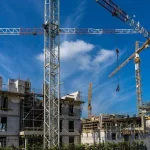When we think about climate change, architecture doesn’t always get the attention it deserves. It’s easier to point to smokestacks, oil rigs, and traffic jams as the villains in the global warming story. But the buildings we live, work, and learn in are a massive piece of the puzzle. In fact, buildings account for nearly 40% of global carbon emissions when you include both construction and operation.
So what happens when architects start not just acknowledging that reality, but designing for it?
That’s the quiet revolution happening across the world right now. Architecture is beginning to shift from passive backdrop to active participant in the fight against global warming. And it’s not just about solar panels on rooftops or more insulation in the walls although those help. It’s about rethinking what a building is, how it interacts with its environment, and how it can contribute to a more resilient, sustainable future.
Rethinking the Basics: From Form to Function
For decades, buildings have been designed primarily for efficiency, economics, or aesthetics. Climate was often a constraint, not a collaborator. But that mindset is changing.
Today’s architects are approaching climate not as a background variable, but as a driver of form. Designs are emerging that prioritize natural ventilation over air conditioning, shading strategies that respond to the movement of the sun, and orientation choices that reduce heat gain before it even happens. Materials are being chosen not just for durability or cost, but for their embodied carbon footprint the amount of greenhouse gas emitted during their production and transport.
This is no longer fringe thinking. It’s becoming mainstream practice.
The future of architecture isn’t about building less. It’s about building smarter with designs that work with nature, not against it.
Cities Are Heating Up And Architecture Has to Respond
One of the clearest consequences of global warming is the rise in urban temperatures. Heatwaves are getting more intense, and cities already heat traps thanks to concrete, asphalt, and lack of vegetation are bearing the brunt.
Future-oriented architects are turning their attention to how buildings can help cool cities, not just themselves. Green roofs and living walls aren’t just pretty they reduce the urban heat island effect. High-albedo materials reflect sunlight rather than absorb it. And strategic use of trees and water features can lower local temperatures by several degrees.
But this isn’t just about science. It’s about equity. Vulnerable communities often live in the hottest parts of cities, with the least access to cooling. When architecture responds to climate, it also begins to address inequality offering relief where it’s needed most.
The Rise of Regenerative Design
Sustainability, for a long time, was the gold standard. Use less, waste less, emit less. But now, a new idea is gaining ground: regenerative architecture. Buildings that don’t just reduce harm, but actively improve their surroundings.
These are structures that generate more energy than they consume, clean the air, purify water, and even regenerate biodiversity on-site. Think buildings that act like forests dynamic, responsive, and net positive.
Some of this sounds ambitious, maybe even unrealistic. But pilot projects around the world are already proving it’s possible. It requires bold design, smart engineering, and a willingness to think beyond the status quo. And increasingly, it’s being guided by data precise, real-time information on emissions, materials, climate patterns, and energy flows.
That’s why access to accurate market insights has become critical. Architects, urban planners, and developers can’t operate in silos. They need to understand the latest in climate tech, policy shifts, carbon accounting standards, and material innovations if they want their work to stay ahead of the curve. The built environment is changing fast, and staying informed is no longer optional.
Building for Uncertain Futures
It’s one thing to design for today’s climate it’s another to plan for what’s coming. And what’s coming, if we’re honest, is a degree of instability. Rising sea levels. More frequent storms. Flooding. Drought. Wildfires.
That means the buildings of the future have to be resilient. Flexible. Ready for disruption.
This doesn’t mean turning every home into a bunker. It means designing systems that can adapt like floodable ground floors that double as public plazas, buildings with passive cooling systems that kick in when power fails, or homes that can disconnect from the grid during outages.
Architecture is becoming less about permanence and more about responsiveness. Less about the ego of the designer and more about the needs of the community.
In many ways, the climate crisis is humbling architecture forcing it to reckon with forces far larger than any one project. But it’s also empowering architects to be agents of change, to design in ways that don’t just minimize damage but actively contribute to long-term planetary health.
Materials, Materials, Materials
If there’s a hidden villain in construction, it’s concrete. Cement production alone accounts for roughly 8% of global emissions. Steel isn’t far behind.
That’s why the materials conversation is front and center in future architecture. Low-carbon alternatives, like hempcrete, mass timber, recycled composites, and even mycelium (yes, mushroom-based materials), are being developed and tested in real projects.
But beyond the hype, architects are also asking better questions. Do we need new buildings at all? Can we retrofit instead? Can we design for disassembly so a building at the end of its life becomes the beginning of the next one?
These are not just design questions. They’re climate questions. And they’re starting to shape the decisions being made at the drawing board.
Architecture as a Cultural Tool
What we build reflects what we value. And architecture has always been a cultural mirror whether it’s a skyscraper symbolizing economic power or a temple reflecting spiritual ideals.
Now, buildings are starting to reflect environmental ethics. They tell stories not just of who we are, but of who we want to be in a warming world.
Architecture is also uniquely placed to make the invisible visible. It can show us how energy flows, how water is captured and reused, how carbon is stored and avoided. Buildings can teach us, inspire us, and remind us that we’re not separate from nature we’re part of it.
That kind of storytelling might be one of the most powerful tools we have in shifting public consciousness. When people feel what a climate-positive future looks like when they can walk through it, live in it, breathe in it it stops being abstract. It becomes real.
Looking Forward
The architecture of the future isn’t just about sleek lines, open plans, or smart tech. It’s about responsibility. It’s about designing with awareness, humility, and ambition.
And if we get it right, architecture can do more than reduce emissions. It can help us imagine new ways of living. More connected. More resilient. More aligned with the rhythms of the planet we all depend on.
Because the battle against global warming won’t be won in labs or at climate summits alone. It will be fought quietly, creatively, and persistently in the spaces we build and inhabit every day.
Explore related articles to deepen your understanding before you go.







